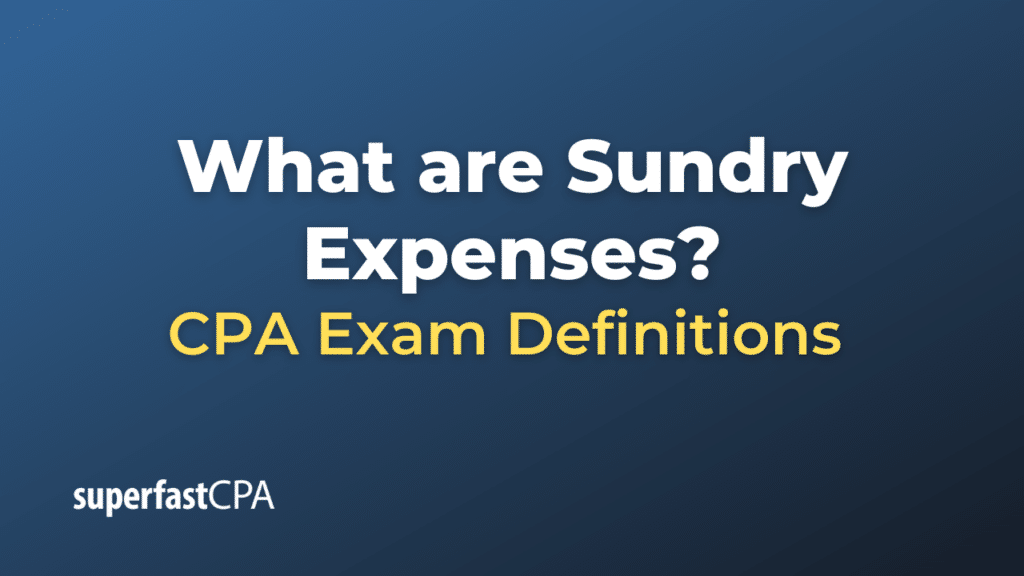Sundry Expenses
“Sundry Expenses” refer to small or infrequent costs that are not significant enough to have their own separate ledger accounts. The term “sundry” essentially means “various” or “miscellaneous.” Rather than listing each of these minor expenses under their own account, they’re grouped together under a general “Sundry Expenses” or “Miscellaneous Expenses” account.
For example, a business might have occasional costs for small office supplies, minor repairs, postage, or other miscellaneous items that don’t fit neatly into a major expense category. Instead of creating a separate ledger account for each of these small items, they might be grouped together under Sundry Expenses for simplicity.
It’s important for businesses to keep a record of these expenses, even if they seem minor, as they can accumulate over time. Regularly reviewing sundry expenses can also help businesses identify if any of these costs are recurring frequently enough to warrant their own separate account or to check if any unusual or unauthorized expenses have been posted to this account.
In some contexts, the term “sundry” might also refer to various small amounts or items not specified elsewhere, like “sundry creditors” (miscellaneous small creditors) or “sundry income” (miscellaneous small income sources). However, with the increasing sophistication of accounting software and the drive for detailed financial analysis, the use of a “sundry” category is becoming less common. It’s generally preferable to categorize expenses as precisely as possible.
Example of Sundry Expenses
Let’s consider a small business, “Jane’s Craft Shop,” to illustrate sundry expenses.
Throughout the month, Jane incurs various minor expenses that don’t neatly fit into her regular expense categories. These might include:
- Office Supplies: Jane bought a stapler and some paper clips totaling $10.
- Refreshments for a Client Meeting: Jane spent $15 on coffee and snacks when she met with a potential supplier.
- Minor Repairs: A window latch broke and cost $20 to repair.
- Postage: Jane spent $5 on postage for a special customer order.
Rather than creating individual accounts for each of these small expenses, Jane decides to group them under “Sundry Expenses” for the month:
Jane’s Craft Shop
Monthly Expense Report
- Rent: $1,000
- Employee Salaries: $3,500
- Raw Materials: $2,000
- Utilities: $150
- Advertising: $200
- Sundry Expenses: $50 (total of the above miscellaneous expenses)
In Jane’s ledger or accounting software, the Sundry Expenses for the month would total $50. When reviewing her monthly or yearly expenses, if Jane notices that one category of sundry expense (like refreshments for meetings) starts to become significant, she might decide to track it as its own separate expense category in the future.
It’s important for Jane to keep detailed records, even for these miscellaneous costs. If an auditor or tax authority reviews her expenses, she needs to have receipts and justification for all amounts, even those categorized under Sundry Expenses.













